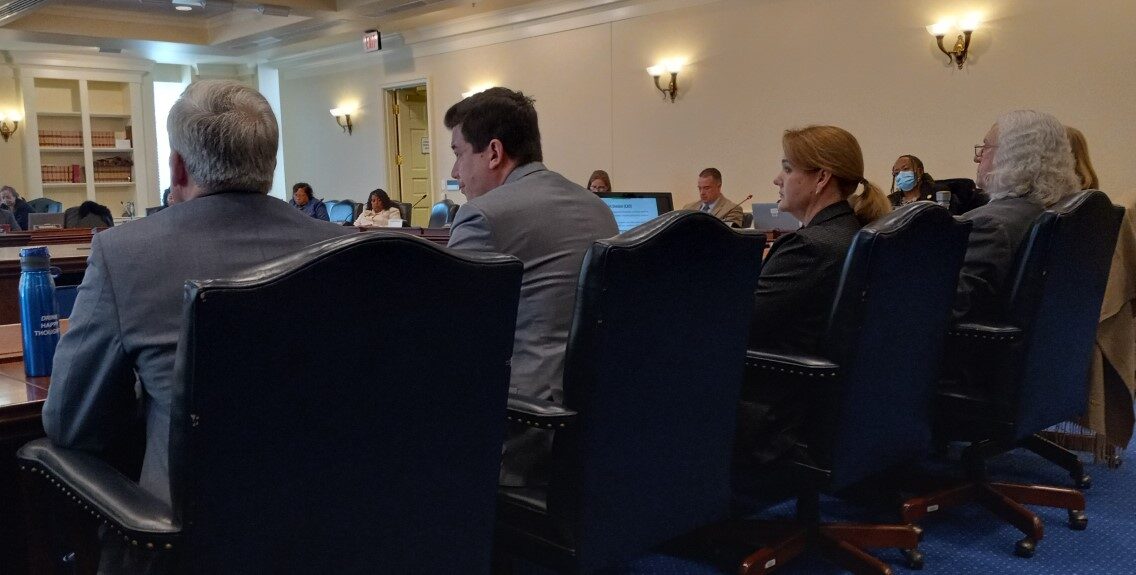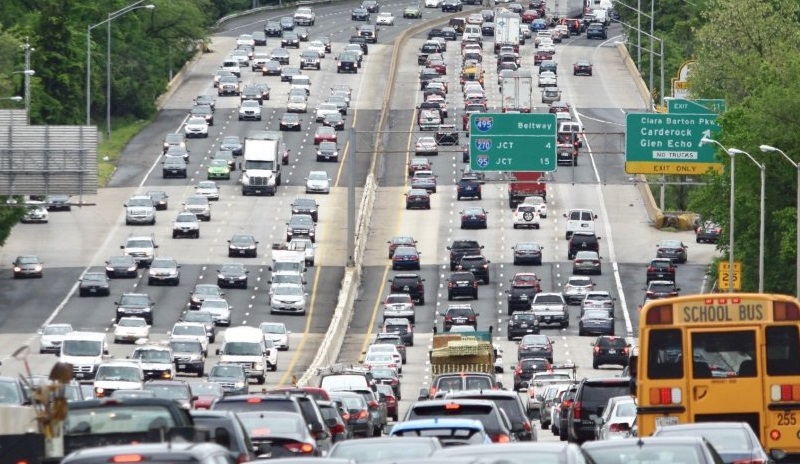Survey Shows Fewer D.C.-Area Commuters Are Driving Solo
It may be hard to notice, given how clogged the Washington, D.C., region’s roads are, but fewer commuters are driving to work by themselves.
While it remains the leading mode of choice for area workers, the region has seen a 12 percent decline since 2007, according to an analysis conducted for the National Capital Region’s Transportation Planning Board.
“Growth and regional improvements to different commuting options like transit and teleworking is allowing more residents in the D.C. region to leave their cars at home,” said Nicholas Ramfos, commuter connections director at the Metropolitan Washington Council of Governments.
The “State of the Commute” Survey, which compiled and analyzed data from more than 8,000 commuters, found that 58.3% of D.C.-area workers drive alone in a private car. In 2007, two thirds of all workers (66.9%) did so.
Mass transit, meantime, is growing in popularity.
Some of the people who used to commute solo by car are now taking mass transit. The survey found that nearly one in four workers (24.1%) ride the bus or the subway, up 4 points from the most recent survey, in 2016.
For many commuters, the last few years have brought change.
Half of the survey respondents who take the subway and bus to work (48% of train users, 53% of bus riders) say they have adopted these modes of travel in the last three years.
For people who bike, walk, or carpool, the numbers are even more dramatic. Nearly three in five of these commuters say they switched in the last three years.
Commuting distances in the capital region are unchanged from the last survey, in 2016. They average 17.1 miles. But it’s taking longer for people to get where they’re going. The average commute time in 2019, 43 minutes, was up 10% from 2016 (39 minutes), and seven minutes longer than 2013, when it clocked in at 36 minutes, on average.
Regional leaders were briefed on the report on Wednesday.
Roger Berliner, the former chairman of the Montgomery County Council’s Transportation Committee, said the new survey carries mixed messages.
“It does seem to be that HOV lanes are having an impact and that people are increasingly gravitating toward options other than driving their car alone,” he said. “But there’s a hardcore group of people that is used to driving alone, and it will be difficult for them to change their behavior.”
A former chairman of the Council of Governments who now serves as managing partner of DMV Strategic Advisors, Berliner said Metro’s months-long maintenance-catchup efforts of 2015 and 2016 appear to have paid dividends.
“There is a willingness to bike and to use mass transit if we make it safe, if we make it comfortable, and if we make it reliable,” he said.
Researchers found that the farther from the District of Columbia workers lived, the more likely they were to drive solo.
Approximately one-third (37%) of “inner core” commuters — those who live in D.C., Arlington, Va., and Alexandria, Va. — drive alone. But the number jumps to 64% for workers who reside in Montgomery, Prince George’s and Fairfax, and to 75% for “outer ring” residents in Calvert, Charles, Frederick, Loudoun and Prince William.
The pattern was similar when researchers looked at workers’ destinations. Fewer than four in 10 (38%) commuters who worked in the Inner Core area drove alone, dramatically lower than the drive-alone rates for Montgomery/Prince George’s/Fairfax workers (78%) and those who work even further from downtown D.C. (87%).
Although the use of telework has been touted as a way of reducing traffic congestion, the 2019 survey found no growth over 2016. 9.7% of workers telework or take advantage of compressed work schedules. (Over time, however, telework has grown. In 2007, when the TPB did its first survey, only 5.7% of the workforce worked from home or a satellite office.)
The use of carpools and van pools continues to decline. In this year’s survey, just 4.6% of commuters used this mode of travel, down from a peak of 7.1% in 2007.
3% of people bike, use a scooter or walk to work, unchanged from 2016.
Just 1% of commuters use a ride-hail service such as Uber, Lyft or Via.
The State of the Commute Survey was based on a 8,246 interviews. Most (7,808) were conducted online; researchers spoke by phone with an additional 438 people.



 Creative Commons Attribution
Creative Commons Attribution